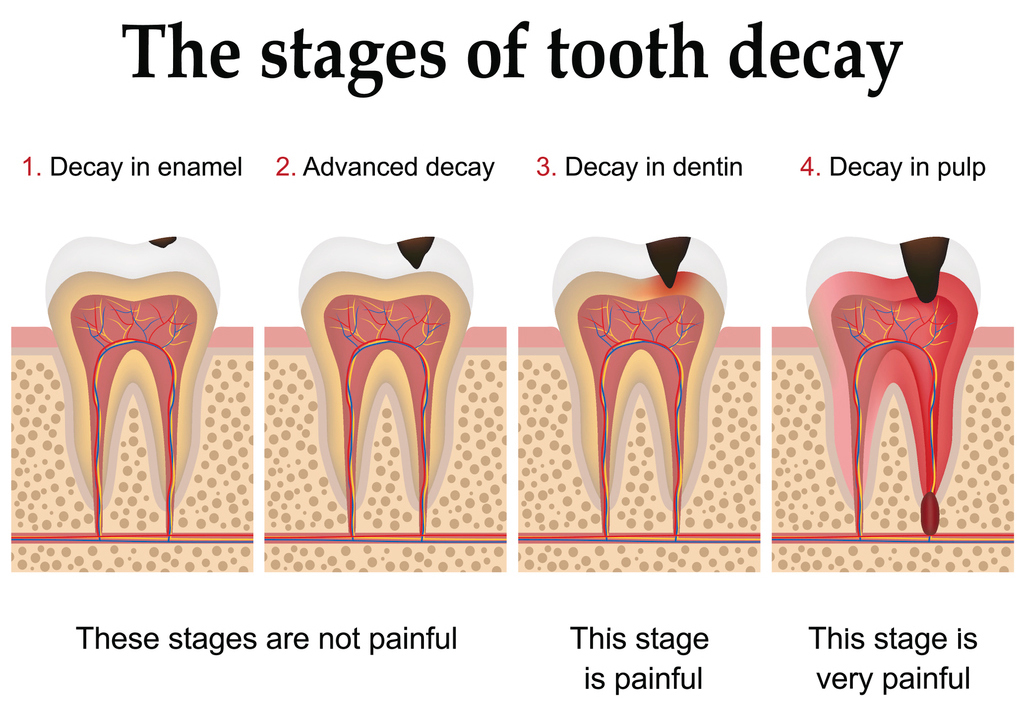Can Tooth Decay Be Fixed? Understanding Treatment Options
The Impact of Tooth Decay
Tooth decay is a common dental problem that affects people of all ages. It occurs when the protective outer layer of the teeth, known as the enamel, begins to erode due to bacterial activity. If left untreated, tooth decay can lead to pain, sensitivity, and even tooth loss. However, the good news is that tooth decay can be fixed with appropriate treatment options.
1. Dental Fillings: A Time-Tested Solution
Dental fillings are one of the most common and effective ways to fix tooth decay. The procedure involves removing the decayed portion of the tooth and filling the space with a suitable material. The most commonly used filling material is composite resin, which matches the natural color of the tooth, making it aesthetically pleasing.
In some cases, amalgam fillings, made from a combination of metals, may be used. Amalgam fillings are durable and less expensive than composite resin, but they are more noticeable due to their silver color.

2. Dental Crowns: Restoring Function and Aesthetics
If tooth decay is extensive and has weakened the tooth structure, a dental crown may be recommended. A dental crown is a custom-made cap that fits over the affected tooth, restoring its shape, size, strength, and appearance. Crowns are typically made from porcelain, ceramic, or metal alloy, and they can last for many years with proper care.
The process of getting a dental crown usually involves two visits to the dentist. During the first visit, the dentist will prepare the tooth by removing the decayed portion and shaping it to accommodate the crown. An impression of the tooth is then taken, and a temporary crown is placed. In the second visit, the temporary crown is replaced with the permanent one.
3. Root Canal Therapy: Salvaging Infected Teeth
When tooth decay progresses to the innermost layer of the tooth, called the pulp, it can cause severe pain and infection. In such cases, root canal therapy may be necessary to save the tooth. Root canal therapy involves removing the infected pulp, cleaning and disinfecting the tooth’s interior, and then filling and sealing it.
Contrary to popular belief, root canal therapy is not a painful procedure. With the use of local anesthesia, patients can experience minimal discomfort during the treatment. After the root canal, a dental crown is usually placed to protect and strengthen the tooth.
4. Dental Implants: A Permanent Solution
In cases where tooth decay has resulted in tooth loss, dental implants can be an excellent option. Dental implants are artificial tooth roots made of titanium that are surgically placed into the jawbone. Once the implants fuse with the bone, they provide a sturdy foundation for the placement of a dental crown, bridge, or denture.
Dental implants offer several advantages, including improved appearance, enhanced speech, and restored chewing function. They also help prevent bone loss in the jaw, which can occur when a tooth is missing for an extended period.
5. Prevention: The Best Strategy
While various treatment options exist, preventing tooth decay is always the best approach. Good oral hygiene practices, such as brushing twice a day, flossing daily, and regular dental check-ups, can significantly reduce the risk of developing tooth decay. Additionally, limiting sugary foods and drinks and avoiding tobacco products can help maintain optimal oral health.
Conclusion
Tooth decay is a common dental problem that can cause significant discomfort and oral health issues if left untreated. Fortunately, there are several effective treatment options available to fix tooth decay and restore the health and function of your teeth.

Dental fillings are a tried and tested solution for smaller areas of decay. They involve removing the decayed portion of the tooth and filling it with a suitable material, such as composite resin or amalgam. Dental crowns, on the other hand, are recommended for extensive decay or weakened tooth structure. They provide a protective cap that restores the tooth’s shape, strength, and aesthetics. https://kickassdental.com.au
In cases where tooth decay has reached the inner pulp of the tooth, root canal therapy becomes necessary to save the tooth. This procedure involves removing the infected pulp, disinfecting the tooth, and sealing it to prevent further infection. Dental implants are an ideal solution for tooth loss resulting from severe decay. They provide a permanent replacement that looks, feels, and functions like a natural tooth.
While these treatment options can effectively fix tooth decay, prevention remains the best strategy. Practicing good oral hygiene, including regular brushing and flossing, along with routine dental check-ups, can help prevent tooth decay from occurring in the first place. Additionally, maintaining a healthy diet low in sugary foods and drinks and avoiding tobacco products can further promote optimal oral health.
If you suspect you have tooth decay or are experiencing any dental issues, it’s essential to consult a dentist promptly. They can evaluate your condition, recommend the most suitable treatment option, and help restore your oral health and smile.
Remember, addressing tooth decay early and seeking appropriate treatment is key to preventing further damage and ensuring a healthy, confident smile for years to come.





